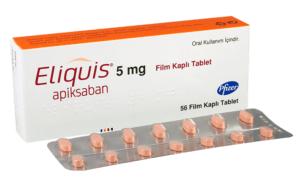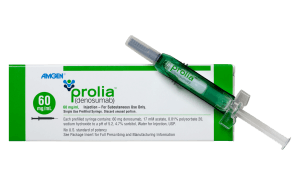
Two comments on this Reddit thread about US insurance coverage for Ozempic and Wegovy highlight the issue’s complexity and spur a relevant and striking discussion.
In the first comment, a person said, “I work in a U.S. pharmacy, and I’ve come to the conclusion that it’s not your insurance but your employer who decides what they are willing to pay for. Regardless of the drug, your employer has negotiated the price/coverage.”
In response, another person said, “I actually work for a large health insurance company as an underwriter, and there are 1000s of different plans for each state. 100 people could all have the same insurer, but each one could have a different plan.”
The bottom line is that what works for one person won’t necessarily work for someone else, even if they have the same insurer or work for the same company but reside in different states.
A dynamic picture is evolving around whether insurance companies are (or will) change their policies around covering the cost of newer diabetic medications.
What made Ozempic so remarkable that it became the treatment of choice for diabetes?
Ozempic was released as the first treatment for type 2 diabetes based on GLP-1RA back in 2017. It more or less took over the market due to the unique benefits it presents. Primarily, these are:
- Allowing a weekly single dose instead of daily (or even multiple times a day) doses that the previous methods required. This is a substantial benefit in terms of patient compliance and convenience. A more straightforward dosing regimen can lead to better adherence to the treatment plan, which is crucial for managing a chronic condition like diabetes.
- A more potent effect in lowering blood sugar levels than many older diabetes medications. This is largely thanks to its mechanism of action, which involves mimicking GLP-1, a hormone that has a dual role. It increases insulin production in response to high blood sugar and decreases the amount of sugar the liver produces. Ozempic can maintain consistent blood sugar control throughout the day, which helps minimize the fluctuations in blood sugar levels, which are a common challenge in diabetes management.
- Lowering the risk of hypoglycemia (abnormally low blood sugar levels) compared to some older diabetes medications, particularly sulfonylureas and insulin. This is because semaglutide’s action level is glucose-dependent; it stimulates more insulin secretion when blood sugar levels are higher, thereby reducing the risk of hypoglycemia, a significant concern for diabetes patients.
It’s important to understand that a condition like diabetes requires careful management. This makes it extremely important to avoid changing medications mid-stream for non-medical reasons, such as a patient’s insurer denying coverage.
Why is the cover for top-line diabetes drugs tightening up?
It all started a year after Ozempic hit the market. Follow-up studies reported that Ozempic also produced substantial benefits in weight reduction, amounting to between 10% to 20% weight loss when it was administered along with a modest diet regime and exercise. The U.S. population has been plagued with obesity. Statistics show that nearly 40% of adults are obese, another 8% are severely obese, and almost 32% percent are overweight. Ozempic rapidly became the focus of much greater demand than the original (smaller) section of people with diabetes. Almost overnight, the demand for Ozempic switched from treating diabetes to promoting weight loss, and the drug supplies couldn’t keep up with the surge. This presented insurers, doctors, and pharmacies with multiple problems. Ozempic can be regarded as a life-saving medication for treating diabetics. However, using Ozempic as a weight loss tool is considered more of a lifestyle choice rather than a life-saving medicine.
Initially, most insurance companies recognized the validity of Ozempic as a necessary treatment for diabetes and routinely covered at least part of the cost for diabetic patients. As a matter of policy for most insurers, weight-loss medication is not covered, and patients have to pay the total cost. But as the border between the two groups of patients began to blur, the insurers became concerned. The issue was the swelling cost of Ozempic and its sister drug, Wegovy, which were being prescribed without any relation to diabetes. Other than extending cover for Ozempic for all purposes (which was economically unfeasible without a substantial increase in insurance rates) or cutting Ozempic out of the covered drugs for all members, which would have been highly unpopular and difficult to justify, insurers faced a dilemma.
At the beginning of 2024, the best summary of what is going on comes from a report by Reuters in mid-December last year. The most salient points that are highlighted in this report are the following:
- In an informal survey of a small group of people with type 2 diabetes, more than half reported recent problems getting their health plans to cover Ozempic.
- Some doctors have been required to provide evidence of the diabetes diagnosis.
- Doctors can also be required to certify that the older alternative medicines, such as metformin, do not adequately control blood sugar levels or cause intolerable side effects for the patient.
- Some patients reported that they had to obtain prior authorization from their insurer before their doctor could prescribe Ozempic. For them, it could involve delays of weeks or even months.
- In some instances, doctors could only switch patients onto Ozempic after trying other drugs.
This additional bureaucracy resulted in some patients already using Ozempic needing to get it covered. The choice is either paying full price or switching to the less effective alternatives. In some cases, doctors could not provide all the necessary proof of the need to switch to or stay on Ozempic. This meant the patients had to return to or stay on the older and less effective treatments.
What is the root cause of the roll-back of insurance coverage for Ozempic?
There is no doubt that Ozempic is a highly effective treatment for patients with type 2 diabetes. And it and the later version called Wegovy, which is based on the same format of GLP-1 agonist drugs (semaglutide), are just as good at promoting weight loss in overweight and obese patients. The fundamental problem for the insurers has come from the potential cost of covering both uses. Ozempic and Wegovy are expensive treatments (currently around $1000 and $1300 per month, respectively).
The combined size of diabetic and obese population groups could result in an annual bill of several hundred billion dollars if coverage is given to all users. So the issue is one of limiting the total cost to the insurers. The insurers have little or no say in what the drug companies charge. That means that the only way they can control their outgoings is to limit the number of prescriptions they cover or the amount they reimburse the member for each purchase. On one hand, they try to restrict the number of prescriptions they approve. On the other, they are cutting back on the value of their reimbursements to the users, leaving the insured patients more out of pocket.
What can you do if you are affected by the changes in insurance coverage for Ozempic or Wegovy?
For people with diabetes who belong to corporate insurance plans, there may be little to no wiggle room. The Reuters article (referenced above) reported, “A survey of U.S. benefits executives found that 74% of large employer-based health plans required diabetes patients to get prior authorization for a GLP-1. A third of the rest planned to add the requirement as they grapple with higher spending on the medications as weight-loss tools.” Likely, all insurance plans will sooner or later follow the same path as the more extensive employer-based health plans already committed to this way of curtailing costs.
The bottom line is that diabetes patients already enjoying the substantial benefits of Ozempic could now find themselves without insurance coverage even when it’s prescribed for the treatment of their diabetes. They may be either forced to switch from the drug back to less effective medications or pay the full retail price themselves. Happily, there is one reasonably simple option offered here on our website. Instead of the full retail price you would have to pay from a U.S. pharmacy (around $1000), we can supply Ozempic for a much lower price per 4-week dose.
The same applies to Wegovy. Currently, very few insurers are agreeing to pay for Wegovy when it is prescribed, regardless of the patient’s condition. The “street price” of Wegovy from US retail pharmacies is around $1350 for one month’s doses at all strengths. You can buy Wegovy 1.7 mg for $575 and Wegovy 2.4 mg for $625 from IsraelPharm, and we do not have to receive any authorization from your insurer. Your doctor can also prescribe it without any of the bureaucratic overhead and time taken to get approval.
















